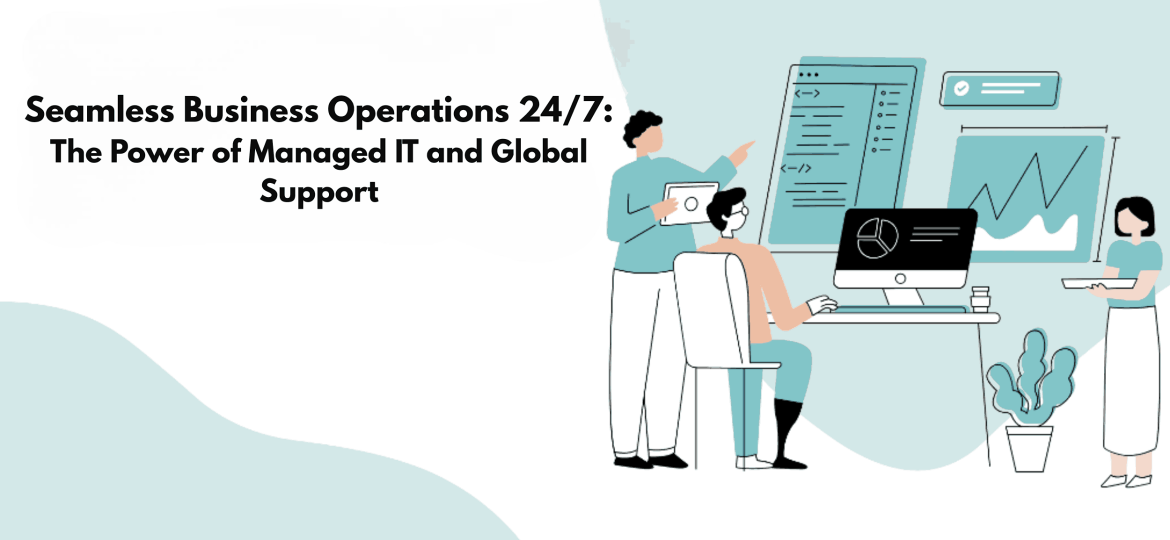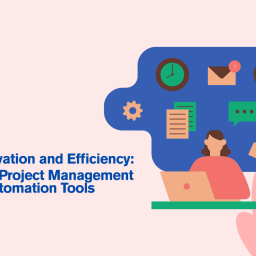
In today’s hyperconnected digital landscape, businesses operate across multiple time zones, continents and cultures demanding seamless technological infrastructure that operates 24/7. The traditional 9-to-5 IT support model has become obsolete, replaced by sophisticated managed IT services that leverage global support networks to deliver round-the-clock operational excellence. This transformation represents more than just extended hours—it embodies a fundamental shift toward proactive, scalable and strategically aligned technology management that drives unprecedented business efficiency.
The evolution of managed IT services has been nothing short of revolutionary. Organizations no longer view IT as a necessary cost center but as a strategic enabler that can make or break competitive advantage. Global support networks have emerged as the backbone of this transformation, enabling businesses to maintain continuous operations while accessing world-class expertise, regardless of geographic limitations. This paradigm shift has enabled companies to transcend traditional boundaries, operating with the agility and responsiveness that modern markets demand.
The Foundation of Global IT Support Excellence
Modern businesses require technology infrastructure that operates with the precision of a Swiss watch and the reliability of a nuclear power plant. Global managed IT services provide this foundation by establishing interconnected support networks that span multiple continents, time zones and cultural contexts. These networks are meticulously designed to ensure seamless handoffs between regional teams, maintaining consistent service quality while adapting to local requirements and regulations.
The architecture of global IT support begins with strategically positioned Network Operations Centers (NOCs) and Security Operations Centers (SOCs) that monitor, analyze and respond to incidents in real-time. These facilities operate as nerve centers, processing millions of data points hourly to identify potential issues before they impact business operations. The sophistication of these operations centers rivals those of major telecommunications companies and government agencies, employing advanced artificial intelligence, machine learning algorithms and predictive analytics to maintain optimal system performance.
What sets exceptional global support apart is the seamless integration of human expertise with technological innovation. While automated systems handle routine monitoring and basic troubleshooting, skilled technicians and engineers provide the critical thinking and problem-solving capabilities necessary for complex issues. This hybrid approach ensures that businesses receive both the efficiency of automation and the nuanced understanding that only experienced professionals can provide.
Breaking Down the 24/7 Operational Model
The concept of 24/7 operations extends far beyond simply having someone available to answer phone calls during off-hours. True round-the-clock support requires a carefully orchestrated ecosystem of processes, technologies and personnel that work in perfect harmony to deliver consistent service excellence. This model is built on several foundational pillars that work together to create an unbreakable chain of support.
Proactive monitoring forms the cornerstone of effective 24/7 operations. Advanced monitoring systems continuously scan networks, servers, applications and endpoints for signs of potential problems. These systems employ sophisticated algorithms that can detect anomalies, predict failures, and automatically initiate corrective actions before users even notice an issue. This proactive approach dramatically reduces downtime and ensures that businesses maintain optimal productivity levels around the clock.
The handoff process between global teams represents one of the most critical aspects of 24/7 support. When the team in New York concludes its shift, comprehensive documentation, ongoing ticket status and real-time system information must be seamlessly transferred to colleagues in London, who will later hand operations to teams in Sydney or Singapore. This process requires standardized procedures, advanced collaboration tools and cultural sensitivity to ensure nothing falls through the cracks during transitions.
Communication protocols within global support networks are designed to eliminate confusion and ensure rapid response times. Clear escalation procedures define when and how issues should be elevated to senior technicians or specialized teams. These protocols include specific timeframes for response and resolution, ensuring that even the most complex problems receive appropriate attention within defined service level agreements.
The Technology Stack Behind Global Efficiency
The technological foundation supporting global managed IT services represents a convergence of cutting-edge innovations that work together to deliver unprecedented operational efficiency. Cloud computing platforms provide the scalability and flexibility necessary to support businesses of all sizes, while advanced networking technologies ensure reliable connectivity across global locations. These platforms are designed with redundancy at every level, eliminating single points of failure that could disrupt business operations.
Artificial intelligence and machine learning have revolutionized how global support teams identify and resolve issues. These technologies analyze historical data, identify patterns and predict potential problems before they occur. Machine learning algorithms continuously improve their accuracy by learning from each incident, creating increasingly sophisticated models that can handle complex scenarios with minimal human intervention. This technological evolution allows human experts to focus on strategic initiatives rather than routine maintenance tasks.
Security represents a paramount concern in global IT operations, requiring sophisticated tools and procedures to protect sensitive data across multiple jurisdictions. Advanced threat detection systems monitor network traffic, user behavior and system activities to identify potential security breaches in real-time. These systems are complemented by comprehensive incident response procedures that can quickly contain and remediate security threats regardless of their origin or target location.
Strategic Business Benefits of Global Support
The strategic advantages of implementing global managed IT services extend far beyond simple cost savings or extended support hours. Organizations that embrace this model gain access to a level of expertise and capability that would be impossible to develop internally. This access to world-class talent and technology creates competitive advantages that can transform business operations and drive sustainable growth.
Scalability represents one of the most significant benefits of global support networks. Businesses can rapidly expand their operations into new markets without the traditional challenges of establishing local IT infrastructure and hiring skilled personnel. Global support teams can quickly adapt to changing requirements, whether supporting a sudden increase in users, implementing new applications or expanding into new geographic regions. This scalability ensures that technology resources never become a bottleneck to business growth.
Risk mitigation through global support networks provides businesses with unprecedented resilience against various threats and challenges. Natural disasters, political instability or local infrastructure failures that might cripple traditional IT operations have minimal impact on organizations supported by global networks. The distributed nature of these networks ensures that support capabilities remain available even when specific regions face disruptions.
The financial benefits of global managed IT services extend beyond simple cost reduction to include improved budget predictability and resource allocation. Organizations can transform variable IT expenses into predictable monthly costs, enabling better financial planning and resource allocation. This predictability allows businesses to invest in growth initiatives rather than maintaining expensive internal IT departments.
Overcoming Implementation Challenges
While the benefits of global managed IT services are substantial, successful implementation requires careful planning and execution to overcome potential challenges. Cultural differences between global teams can create communication barriers and workflow inefficiencies if not properly addressed. Successful organizations invest in cultural training and establish clear communication protocols that account for linguistic and cultural variations across different regions.
Data sovereignty and regulatory compliance present complex challenges when operating across multiple jurisdictions. Different countries have varying requirements for data protection, privacy and regulatory compliance that must be carefully navigated. Global support providers must maintain expertise in international regulations while implementing technical solutions that ensure compliance across all operating regions.
The transition from internal IT management to global managed services requires careful change management to ensure smooth adoption. Employees must be trained on new procedures, systems and communication channels. This transition period requires strong leadership and clear communication to minimize disruption and maximize adoption rates.
Measuring Success and Continuous Improvement
The effectiveness of global managed IT services must be continuously measured and optimized to ensure maximum business value. Key performance indicators (KPIs) should encompass not only traditional metrics like uptime and response times but also strategic measures such as business impact, user satisfaction and innovation enablement. These metrics provide insights into how well the managed services are supporting overall business objectives.
Regular performance reviews and optimization sessions ensure that global support networks continue to meet evolving business requirements. These reviews should examine service delivery metrics, cost effectiveness and alignment with business strategy. Continuous improvement processes identify opportunities for enhancement and ensure that the managed services evolve alongside changing business needs.
The future of global managed IT services continues to evolve with emerging technologies and changing business requirements. Artificial intelligence, edge computing and advanced automation will further enhance the capabilities of global support networks. Organizations that embrace these innovations while maintaining focus on business outcomes will achieve sustained competitive advantages in an increasingly digital marketplace.
Embracing the Future of Business Operations
The transformation toward global managed IT services represents more than a technological evolution—it embodies a fundamental shift in how businesses approach operational excellence. Organizations that embrace this model gain access to unprecedented capabilities, expertise and resilience that would be impossible to achieve through traditional internal IT departments. The 24/7 support model powered by global networks has become not just a competitive advantage but a business necessity in today’s interconnected world.
Success in this new paradigm requires more than simply outsourcing IT functions; it demands a strategic partnership with service providers who understand business objectives and can align technology solutions with organizational goals. The most successful implementations combine advanced technology with human expertise, creating synergies that drive innovation and operational excellence.
As businesses continue to evolve and expand globally, the importance of robust, scalable and reliable IT infrastructure will only increase. Global managed IT services provide the foundation for this growth, enabling organizations to focus on their core competencies while leveraging world-class technology capabilities. The future belongs to businesses that can adapt quickly, operate efficiently and innovate continuously—all capabilities that global managed IT services are uniquely positioned to deliver.
The journey toward managed IT excellence is ongoing, requiring continuous evaluation, optimization and adaptation. Organizations that view this transformation as a strategic investment rather than a cost center will reap the greatest rewards, positioning themselves for sustained success in an increasingly competitive and digital marketplace. The question is not whether to embrace global managed IT services, but how quickly and effectively organizations can implement these capabilities to drive their business forward.
















